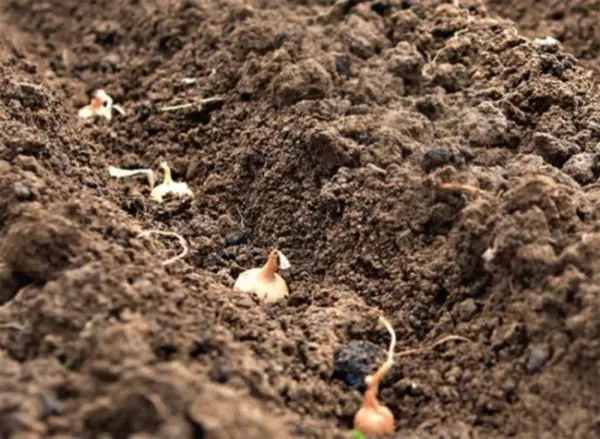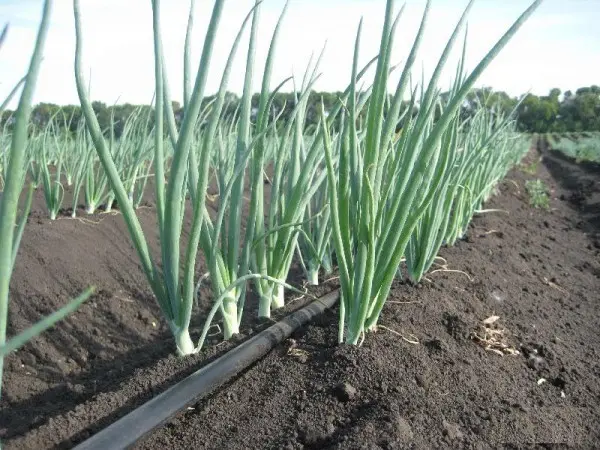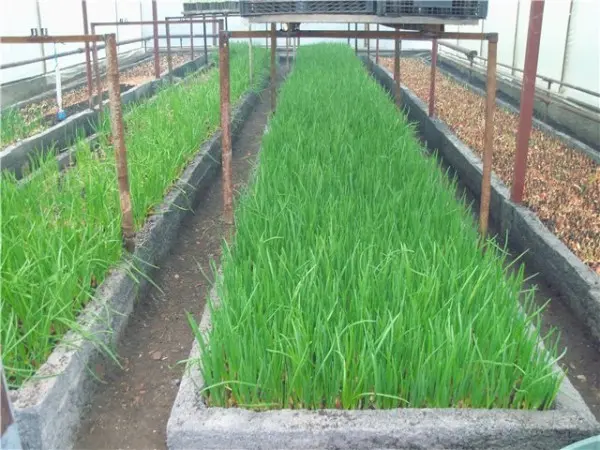Contents
It is difficult to find a garden or summer cottage where onion watering would not be organized, because all vegetables require moisture when they grow and ripen. Vegetables require different amounts of water during different periods of growth. Therefore, how to water the onions, and even the first time after planting, is not an idle question at all.
If necessary?
Usually, all vegetables are watered after planting, some more, others less. Some farmers also suggest planting onions in very moist soil or watering well as soon as they are planted. They explain this by the fact that small roots must find nutrients, and without water this is impossible. Others say that the onion does not need much moisture, as it comes from the arid climate of Central Asia.
In the homeland of wild onions, it receives moisture in the spring, manages to grow a few leaves, and then a dry hot summer comes – the onion falls into a dormant state until the winter rains. So our varietal onion grows intensively, receiving moisture, and with its lack, it slows down growth and can fall asleep, that is, stop growing a turnip and form leaves. So watering, of course, is necessary. The intensity of irrigation and the amount of water depend on the climate, the amount of rain, the time and method of planting. There are different approaches to this issue in the case of sowing seeds and planting sevka, when planting in spring and before winter. Each case requires its own amount of water and method of watering after planting.

How many times to water
Onions definitely need moisture to grow and ripen. Otherwise, where will the turnip get its mass and juiciness from? But everything should be within reasonable limits. If the site is located in an area of high humidity, it is better to make a high bed with good drainage so that the water does not stagnate. Otherwise, the owner risks getting rotten onions with the whole set of fungal diseases. If rains are very rare, and the onion does not threaten to be in the middle of a puddle, the garden bed can be on a flat area, not higher than other vegetables.
With early planting before winter, when they plan to get a few fresh green leaves before frost, after placing the sowing in the soil, the bed is watered abundantly. Since the onion has to grow, it can be moistened a few more times if necessary. It is easy to check by simply touching the ground with your hand to the depth of your palm, the main thing is simply to prevent drying out. When sevok is planted in the ground just before the frost, it should not grow until spring, on the contrary, it should be at rest. This means that they plant it in specially unmoistened soil, after which they do not water it. It doesn’t matter if it rains – that’s why it’s autumn, but special watering is not needed.

When planting or sowing in spring, you need to immediately give the plant the opportunity to take root and begin to grow, so watering is needed. But here it is important not to overdo it. In the spring, not only onions grow – bacteria are activated that can cause various diseases, pests that carry them. It is enough to water 1 or 2 times a week (if there is no rain), it will take approximately 10 liters of water per 1 m2. This is the first time after planting, then the amount of water is slightly reduced. Such a watering calendar is quite suitable even for summer residents of the “weekend”, moderate watering on Fridays and Sundays is quite enough.
Features of proper watering
It is believed that for the first 2 months the onion is actively growing, releasing feathers, increasing the mass of the turnip – accordingly, it needs watering. And stop watering when the turnip has gained the desired mass (in accordance with the capabilities of the variety). After that, the onion prepares for a dormant period – it stops growing, the leaves begin to fall, the neck stretches, dries up. Here, watering can only do harm.

Watering onions is recommended only with warm water – cold water can do more harm than good. It is useful if water is used, which was previously collected in a metal barrel and during the day not only settled, but also warmed up well in the sun. Onions should be watered carefully so that water does not get inside the leaves (in the neck), as well as on the turnip itself – this can pose a threat of decay. But if the kuschevka or any other onion is grown for the sake of feathers, the roots sit deep in the ground, then you can pour it from above from a watering can, moisture will not damage the leaves either.
It is usually said that onions are watered as needed. How can this need be determined? It is necessary to check the earth (just with your hand) and not let it dry out, but do not turn it into a swamp. The lack of water will immediately affect the leaves – they will become flatter, turn white, the tips will begin to dry. An excess will make the leaves light green, watery.
Video “All about watering onions”
In this video you can hear all the details and a lot of tips about watering onions.
What to water?
Irrigation with a hose causes fear – a strong jet can expose the bulbs, which means making them vulnerable. Soil erosion should not be allowed. A strong jet from a hose, even with a sprinkler, can damage crops: wash the seeds, which is also unacceptable. Onions grown on a feather, especially in small quantities, can be watered from an ordinary garden watering can. But if we are interested in a turnip, it is better to water it in the aisle. When a little onion grows in the country, the owner waters it manually, you can water it with a hose with very little pressure, first you need to make a groove between the rows and carefully pour water into it. On large beds, with large volumes of onions, this will be difficult to do – it will take a very long time.
A drip irrigation system can be a great solution. It would be best to lay a hose with small holes along the entire length of 8-10 cm in the aisles. This will allow watering precisely between the rows – this will be enough for the bow. It is absolutely not necessary to make bends to the side in order to bring moisture directly under the root, this is not required for the bow.
Watering is necessary for onions, like any vegetable in our garden, but you need to take into account all the features of the variety, place and time.

Video “All about planting onions and caring for them”
The video tells the details of planting onions and caring for them, including watering the onions.










